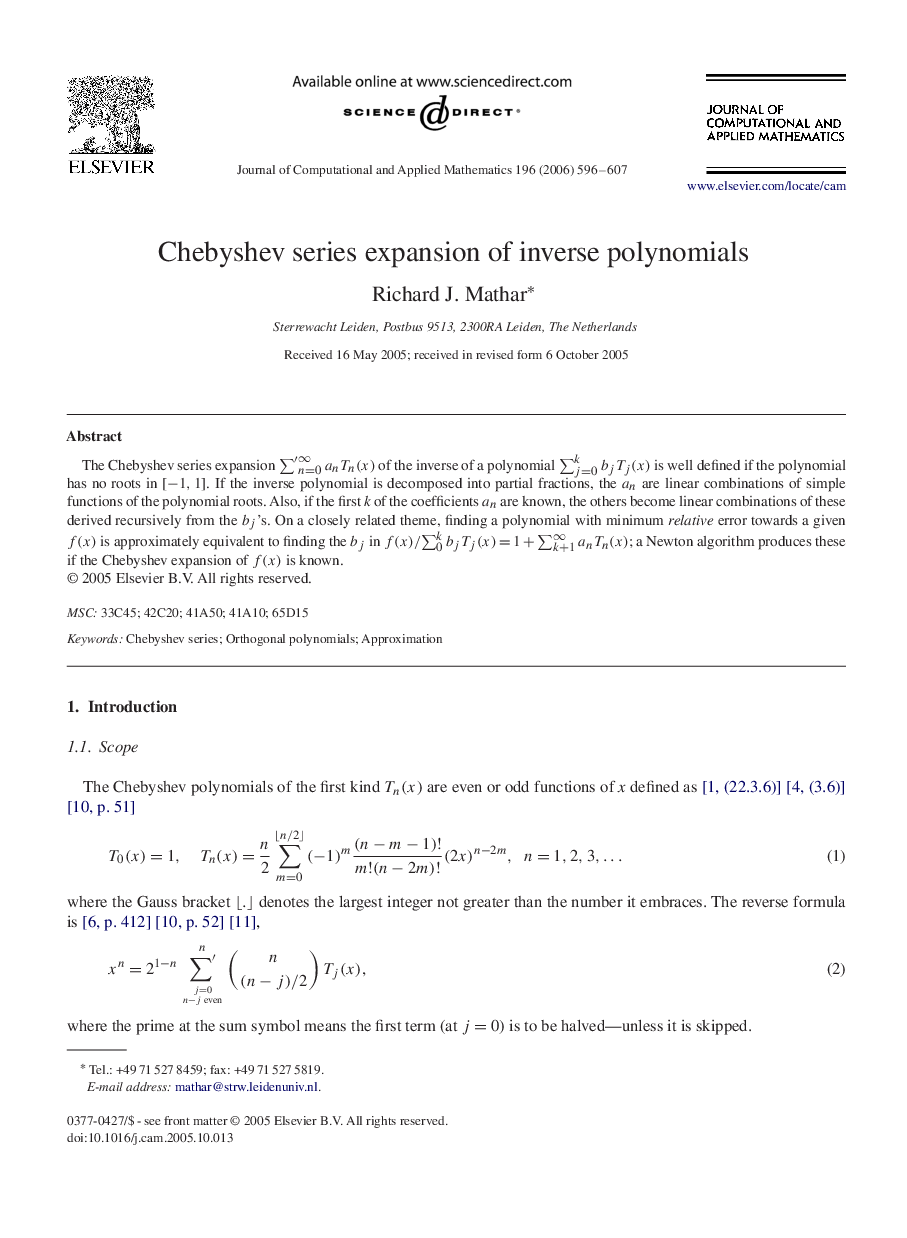| Article ID | Journal | Published Year | Pages | File Type |
|---|---|---|---|---|
| 4643364 | Journal of Computational and Applied Mathematics | 2006 | 12 Pages |
Abstract
The Chebyshev series expansion ∑′n=0∞anTn(x) of the inverse of a polynomial ∑j=0kbjTj(x) is well defined if the polynomial has no roots in [-1,1][-1,1]. If the inverse polynomial is decomposed into partial fractions, the anan are linear combinations of simple functions of the polynomial roots. Also, if the first k of the coefficients anan are known, the others become linear combinations of these derived recursively from the bjbj's. On a closely related theme, finding a polynomial with minimum relative error towards a given f(x)f(x) is approximately equivalent to finding the bjbj in f(x)/∑0kbjTj(x)=1+∑k+1∞anTn(x); a Newton algorithm produces these if the Chebyshev expansion of f(x)f(x) is known.
Related Topics
Physical Sciences and Engineering
Mathematics
Applied Mathematics
Authors
Richard J. Mathar,
